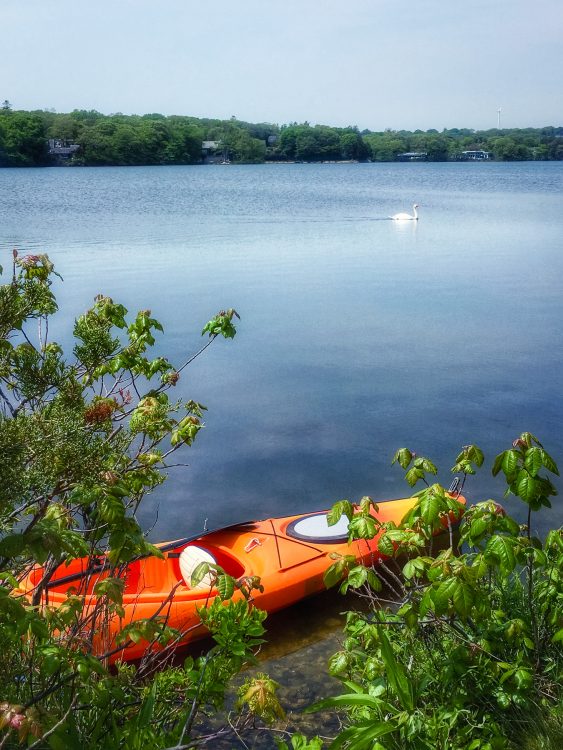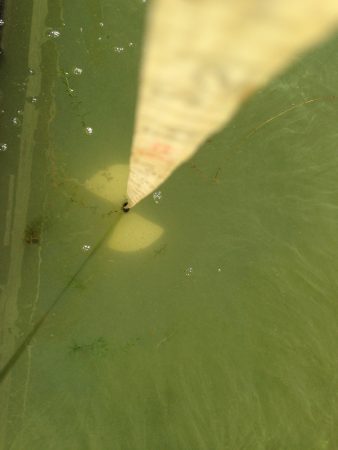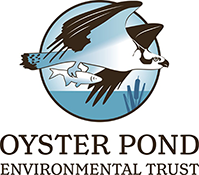September 2020 – OPET has monitored the condition of the pond all summer.

Photo by Dorene Sykes
We didn’t want a repeat of the algal bloom in 2016 when the pond turned pea soup green. The algae was so thick that you could only see less than two feet down into the water, unlike the usual four and a half feet during a normal summer.
The weather conditions are similar to that summer with very hot, dry, and droughty conditions. The big difference, however, is the pond salinity is much higher than that summer. Then the salinity was 0.9 parts per thousand (ppt) and now it is 4.5 ppt. A higher salinity level prevents the growth of fresh water cyanobacteria.

Secchi disk in August 2016 showing the poor visibility due to the thickness of the algal bloom.
The through dredging by the Town in the spring allowed storms and high tides to flow into the pond raising the salinity levels in the water. The dredging also allowed the pond to flow out to the Sound. In 2016 there was little exchange between the pond and the ocean resulting in more stagnant water.
Even though the pond appeared to be ok and the water was clear, we took an extra step to be certain. We joined the Association to Preserve Cape Cod (APCC) efforts to test ponds across the Cape as part of their cyanobacteria cyanobacteria monitoring program monitoring program.
The results show cyanobacteria levels are low, but many long strands of Dolichospermum were found. This is a very common type of cyanobacteria in Cape ponds. It must be stressed that cyanobacteria are an a natural and important part of a pond’s ecosystem. These bacteria are the base of the food web for ponds. It can be produce toxins in some environmental conditions. This is why we will have the APCC to continue to test the pond until the end of September.

